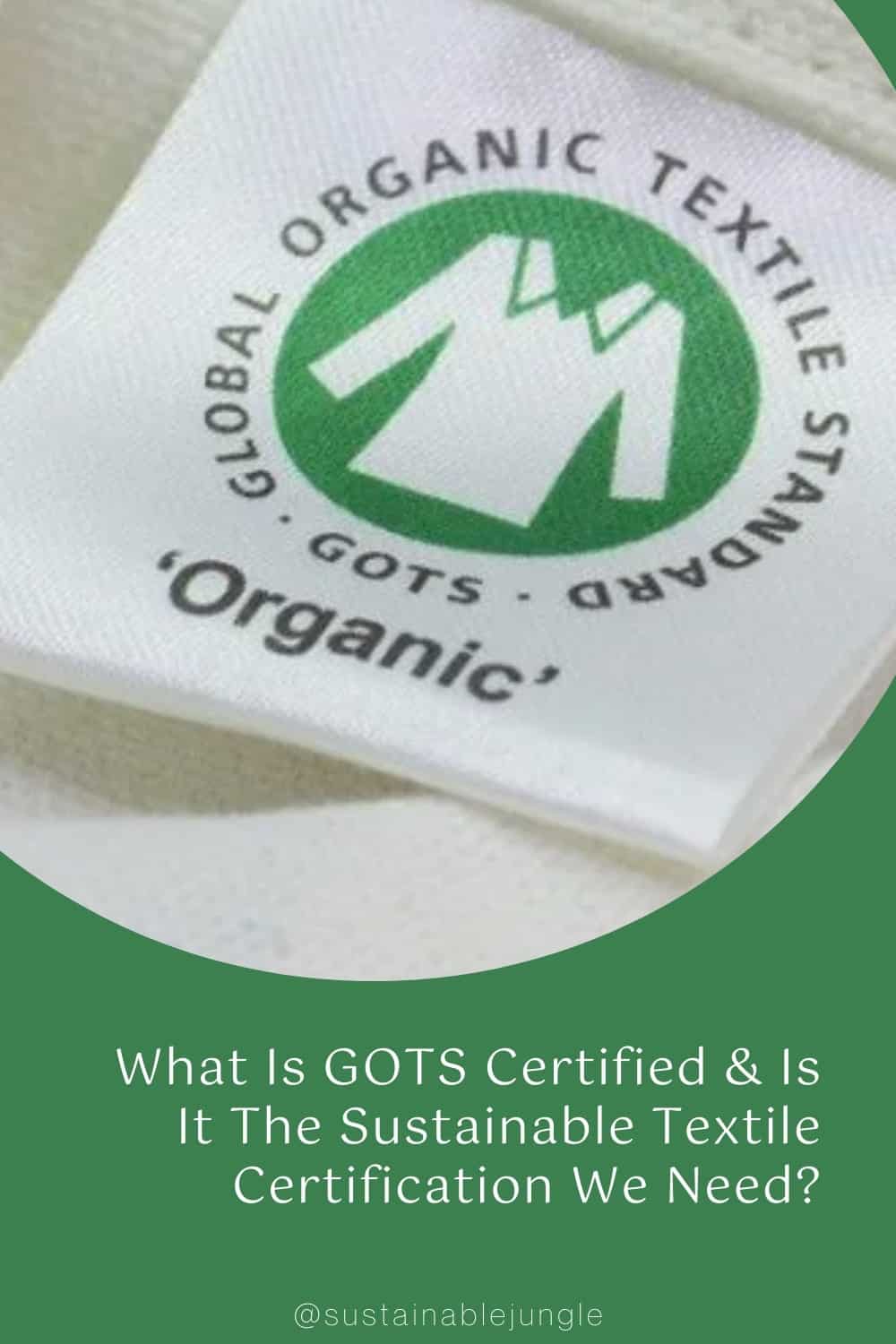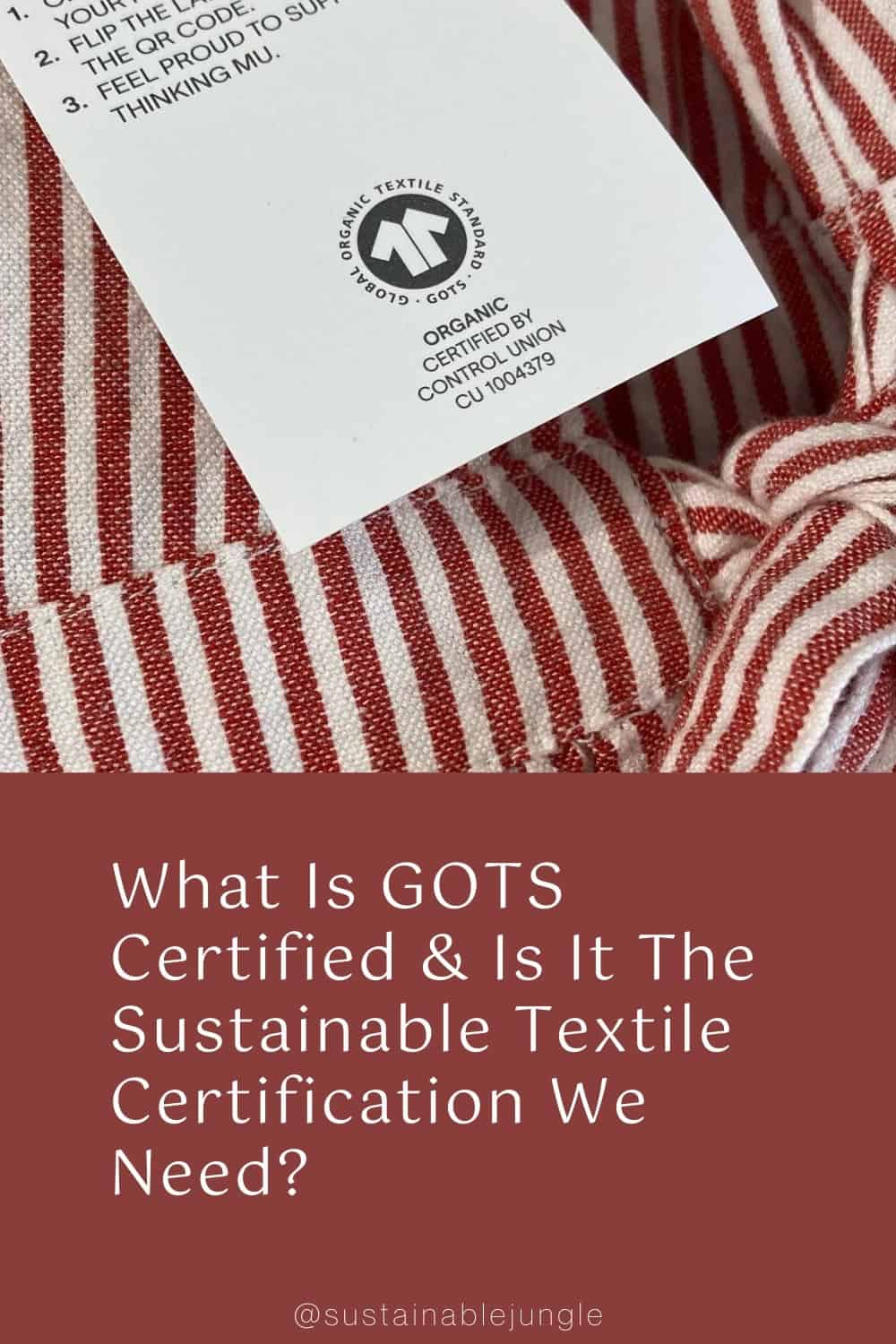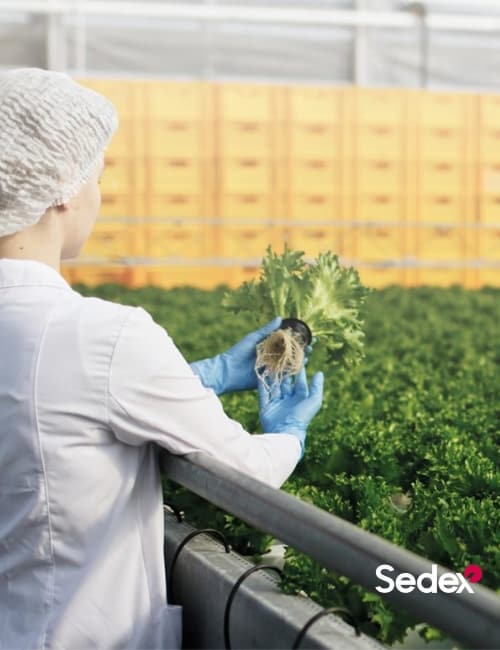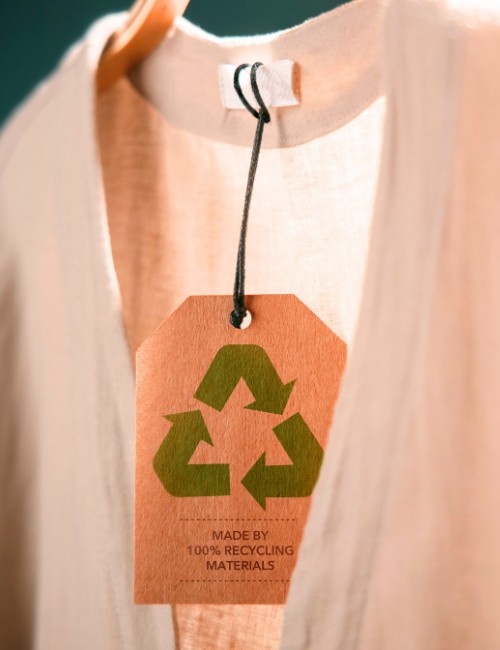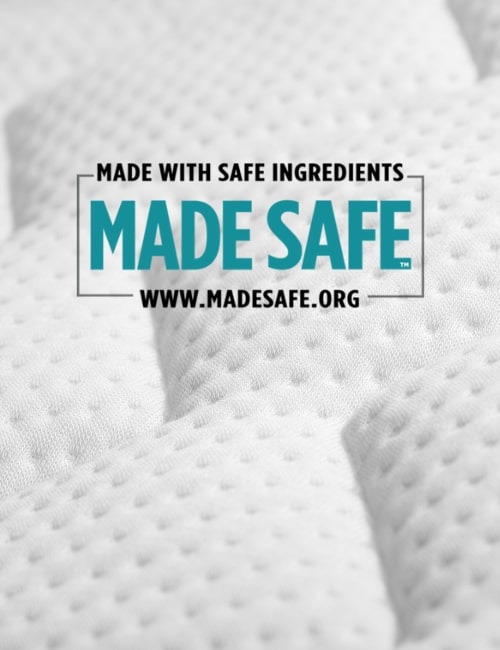
What Is GOTS Certified & Is It The Sustainable Textile Certification We Need?
One of the most common acronyms popping up on clothing tags everywhere, you, along with many other shoppers, may be increasingly wondering what is GOTS certified?
These four little letters are intended to transform the sustainable fashion world, but do they actually?
As is the case with sustainability certifications, there’s the intention behind it, the reality of what’s underneath it, and how we as consumers think about it. How congruent each of these are is the question.
To find out, we’ll explore the pros and cons of GOTS certification and ultimately uncover if it’s the slow fashion solution we need—or if GOTS puts the ‘G’ in greenwashing.
Let’s GO(ts)!
1. What Is GOTS Certified?
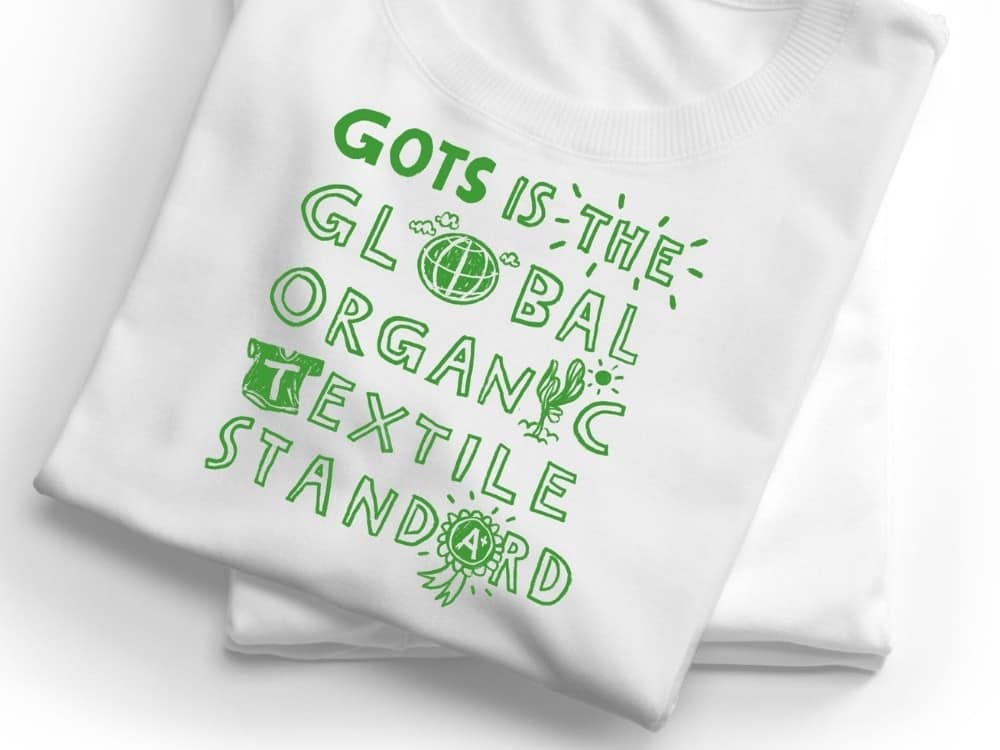
The Global Organic Textile Standard, or GOTS for short, was founded by four organizations: Organic Trade Association (USA), Internationaler Verband der Naturtextilwirtschaft (Germany), The Soil Association (UK), and Japan Organic Cotton Association (Japan).
Rooted in organic agriculture in textiles or food, these leading industry organizations came together in 2002 with a vision for an internationally recognized standard for organic textiles.
With the advice and input from other relevant stakeholders, they created one.
After years of negotiation, the Global Organic Textile Standard was established in 2006.
By 2008, almost 2,000 facilities were certified and in January 2010, GOTS certification could be awarded by 12 different certification bodies.
As of February 2022, there were 12,338 GOTS certified facilities (now supported by 18 certification bodies). The certification covers well over 3 million workers in 73 countries.
What can be GOTS certified?
The leading organic textile standard, the GOTS logo—a white t-shirt at the center of a green circle—can indicate certification on a range of products:
- Accessories
- Babywear
- Children’s Wear
- Fabrics
- Garments
- Home Textiles
- Hygiene Products
- Ladieswear
- Leisure Wear
- Men’s Wear
- Non-Wovens
- Raw Fibers
- Socks
- Sportswear
- Technical Textiles
- Toys
- Underwear
- Yarns
2. What Does GOTS Certified Mean?
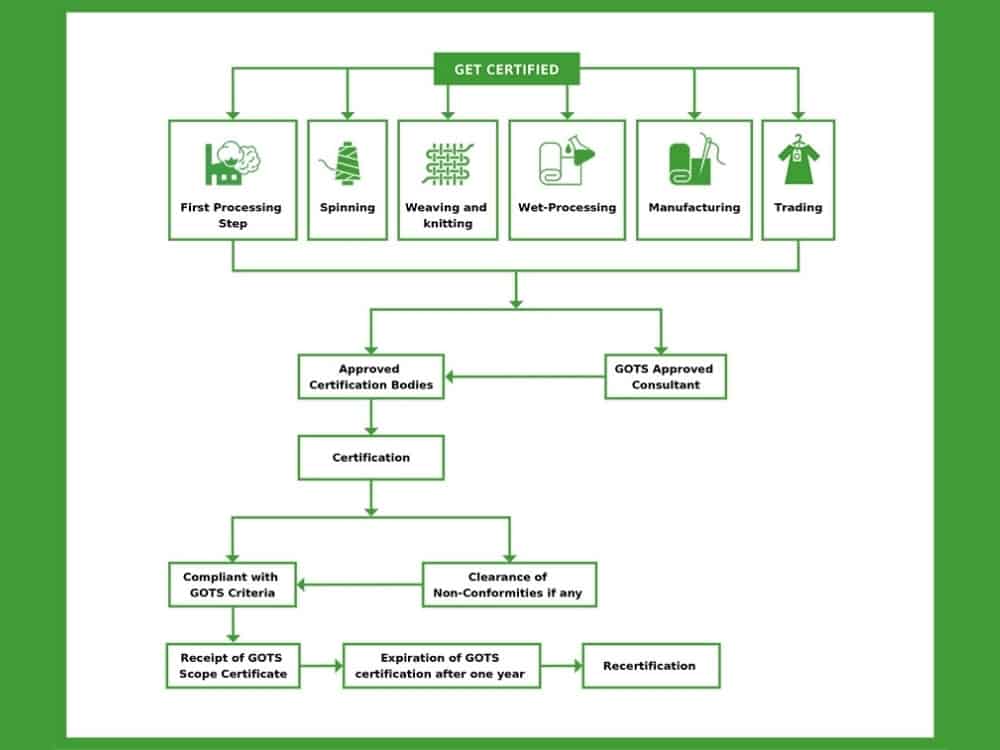
Endorsed by major institutions like IFOAM and USDA, the GOTS standard covers environmental, technical, and social criteria across a brand’s entire supply chain.
Let’s dive into exactly what that means.
Organic and almost-organic fibers only
GOTS certification only applies to organic fibers that are certified by any international or national standard that meets IFOAM standards.
While mostly used to certify organic cotton, GOTS certification also applies to the following fibers:
- Wool
- Flax (linen)
- Silk
- Hemp fabric
Those that contain a minimum of 70% certified fibers can carry the GOTS label, while those with at least 95% certified organic fibers can be deemed fully GOTS organic.
The label grade “organic in conversion” is also allowed for agricultural practices that are transitioning towards organic within a 3-year conversion period.
Processing and beyond
The GOTS certification process is a comprehensive one that spans the textile’s entire life, “from field to fashion”, until it reaches consumer hands.
However, GOTS using the term “field” is somewhat misleading since GOTS’ oversight and certification process does not begin until the first (post-farm) processing stage, which can differ by particular fiber. For example, cotton’s first processing stage is ginning and linen’s is rippling.
To obtain the certification, every single entity involved in the supply chain—ginning/rippling/etc, spinning, weaving/knitting, wet-processing, manufacturing, trading, and distribution—must pass the certification process.
It is mandatory that GOTS certified entities meet all ecological and social criteria and are annually inspected by accredited certifiers.
Environmental:
- Identification and separation of conventional and organic fibers
- Use of GOTS-approved dyes and chemicals in wet-processing only
- Prohibition of environmentally hazardous substances (GMOs, heavy metals, formaldehyde, aromatic solvents, and other prohibited inputs are banned)
- Evaluation of biodegradability and toxicity of chemical inputs
- Demonstrated environmental management, including wastewater treatment
They must provide a written environmental policy, test for GMO contamination, keep comprehensive records of energy, water, and chemical use, and treat wastewater before discharging it.
Inputs and accessories are assessed and environmental wastewater treatment systems are verified by the auditors.
Social:
- Freely chosen employment
- Prohibition of child labor
- Freedom of association and collective bargaining
- No discrimination, harassment, and violence
- Remuneration and assessment of living wage gap
Social criteria are based on the key norms of the International Labour Organization (ILO), United Nations (UN), and Organisation for Economic Co-operation and Development (OECD).
Above all, certification is mainly based on product flow documentation which includes the volume of organic textiles sold.
However, it’s impossible to actually know the true amount of organic textiles produced (as there’s no data sharing between organic certifiers and GOTS), so checking volume amounts doesn’t really do anything to assure that it’s organic.
3. Is GOTS Certification Sustainable?
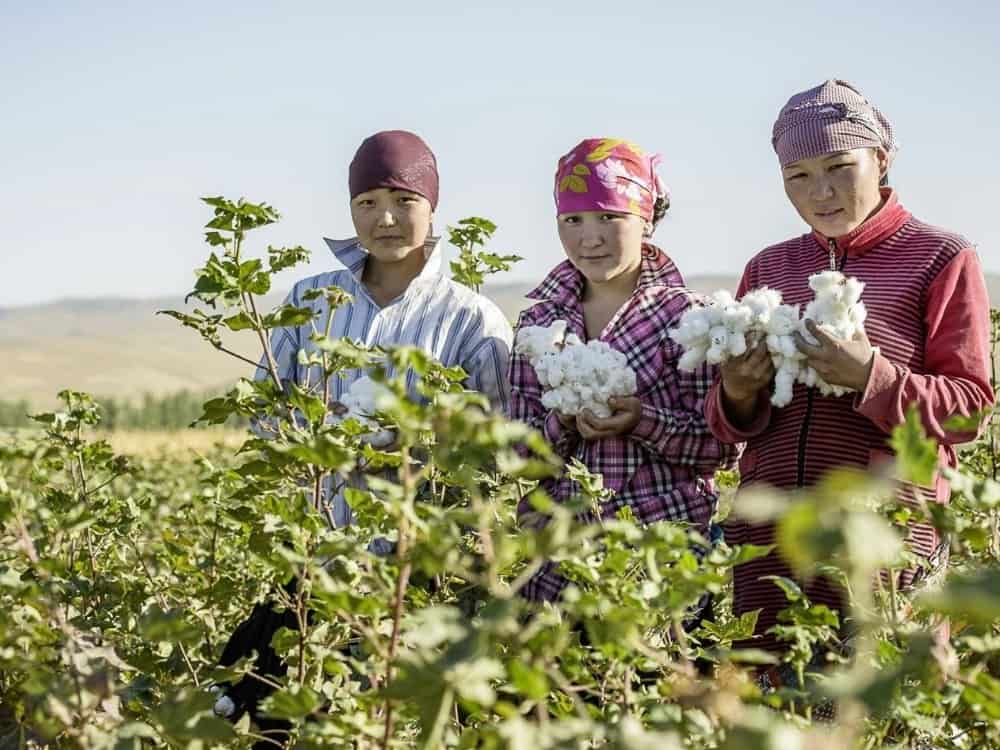
When an inspector (paid by the manufacturer, trader, and processor) performs the annual audit, they’re looking at paper—often handwritten—documents.
For any high schooler who’s changed a 68 to an 88 on a test grade before showing their parents, it’s clear to see how this system of “trading paper” is prone to problems.
Fraud with Indian organic cotton has been a problem for more than 14 years.
So even if an organic cotton t-shirt is produced using non-toxic dyes and chemicals, all manufacturing wastewater is treated, and no child labour is present, is it still sustainable if it doesn’t actually begin with organically grown crops?
Farming conventional cotton comes with a slew of ethical and environmental issues like significant water use, shocking insecticide requirements, and farmer deaths—to name a few.
What happens after that point seems to be fait accompli as far as negative impacts are concerned. That is, if it’s not grown organically in the first place.
Growth in “organic” doesn’t mean growth in sustainability
The IFOAM, whose standards are adhered to for GOTS certification, has a lot on its plate (like organic food) which prevents them from policing organic cotton.
The Indian government launched TraceNet (over a decade after first promising to do so) to manage numbers of organic cotton, but their oversight largely stops at the cotton gin—which is where GOTS takes over.
When the industry is so fragmented, traceability appears to be impossible.
Not to mention organic cotton is incredibly lucrative, just not for farmers. Instead, it lines the pockets of corrupt inspecting agencies, governments (Indian, Chinese, and Turkish, primarily), and of course, GOTS itself.
With its prestige and revenue at stake, the incentive to improve and crack down on corruption is stunted.
Especially when GOTS continues to experience tremendous growth—even when increased production in real organic cotton doesn’t.
In fact, real organic farmer numbers in India are dropping due to rising operational costs and stagnating compensation.
Are GOTS certified suppliers eco friendly and ethical?
But what about ethics?
Are GOTS’ social criteria better for workers?
If cotton is in fact grown organically, it doesn’t expose farm workers to the plethora of dangerous chemicals which are responsible for many deaths in conventional cotton farming.
However, questions about being actually organic aside, let’s revisit one of the criteria: “Remuneration and assessment of living wage gap.”
While those certified will have to calculate the difference between real wages and living wages, they only have to work towards reaching the latter.
This, in addition to the fact that pre-processing workers aren’t a consideration for the standard, has been under criticism.
Especially considering that GOTS guidelines mandate that fibers are only excluded when “evidence of a persistent pattern of gross violation of the ILO core labour norms… or irrefutable evidence of a persistent pattern of land grabbing methods” are reported.
“Persistent” being the key word that opens up a lot of unethical GOTS loopholes.
4. How Reliable Is The GOTS Certification?
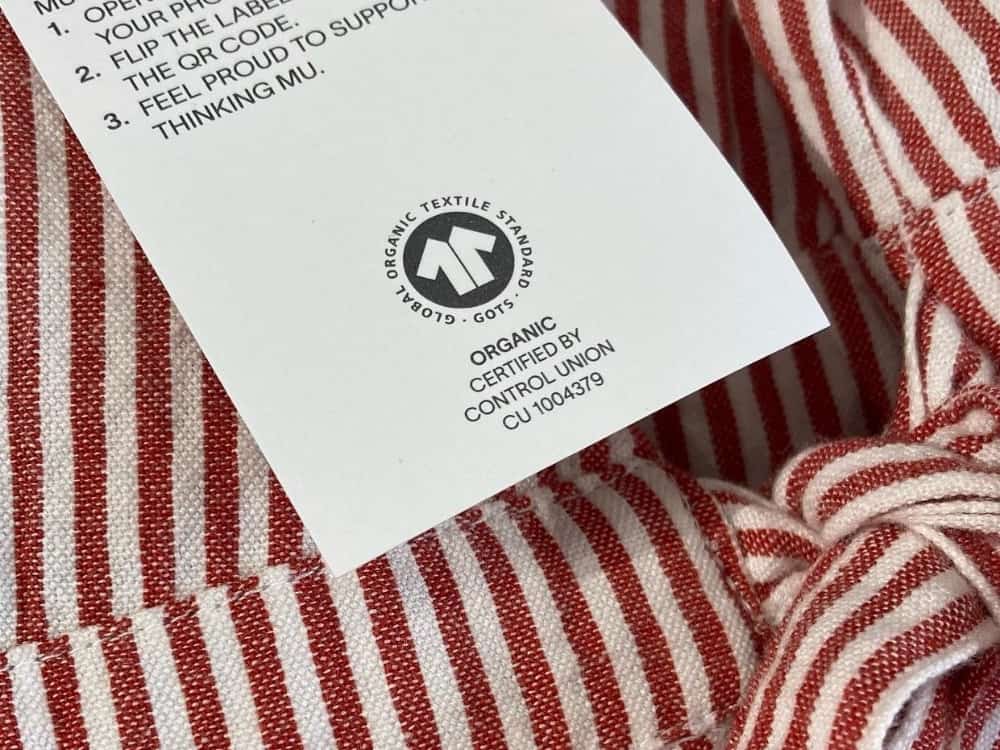
Organic is #trending these days and more and more brands, growers, and processors are cashing in on the consumer interest.
This is especially the case for organic cotton, which can be used to rack up the price tag on anything from towels and socks to sweatpants and t-shirts.
India, the world’s largest producer of organic cotton, experienced a whopping 48% growth in production in 2021. Between 2016 and 2019, it doubled.
But as it turns out—according to those who farm, source, and process organic cotton—this growth is fictitious.
In what’s recently been referred to as “a game of smoke and mirrors,” as much as 50% – 80% of what’s being sold as Indian organic cotton is not genuine.
So is GOTS a credible certification?
With (at best) annual audits and inspections and multiple possible certifying entities, each of which can have its own ethics, the organic certification system is rife with opportunities for fraud.
Really, determining whether GOTS is a reliable certification largely hinges on the specific certifying body. The trick is knowing which one certified the cotton in your t-shirt and whether they’re one of the good ones.
The USDA no longer accepts organic cotton certified by Indian government-overseen inspection agencies.
Similarly, the EU now rejects raw Indian products deemed “organic” by GOTS certifiers OneCert, EcoCert, and Control Union.
The fallout was OneCert losing its license to inspect and certify, but the other two bodies are still approved to certify for GOTS.
Fraudulent organic Indian cotton is an outdated look
Fraudulent Indian organic cotton isn’t exactly breaking news to GOTS.
On October 30, 2020, they issued a press release stating that, through their own investigation, they “obtained substantial documentary evidence confirming rumours about systematic fraud abusing the Indian government certification system of organic cotton production.”
In this case, it was the Transaction Certificates (TCs) that were fake.
Deemed “gigantic scale” fraud, these false certificates were used for more than 20,000 metric tons of organic cotton.
At this point they introduced measures to prevent fraud, stating that any organic raw material would have its TCs checked for authenticity and credibility.
The 11 companies involved in the fraud were banned by GOTS claiming that “while these steps are strict, they are inevitable and will in the long run, strengthen the credibility of organic fibre production and GOTS.”
But is GOTS a trustworthy certification?
Much like the recent concerns around the reliability of forestry certifications and B Corp, the same questions have arisen in the GOTS context.
According to Textile Exchange, which oversees the Organic Content Standard (OCS) and supported GOTS’ bans, remaining unbiased means that neither organization has the authority to grant or withdraw certification of sites.
The power remains solely in the hands of the certification bodies—which, for GOTS, still includes two inspection agencies with controversial credibility.
If GOTS still certifies Indian cotton deemed organic by Control Union and EcoCert even when the EU doesn’t out of legitimate concern that it could be fraudulent, chances are the GOTS certification isn’t all that reliable.
5. Can You Trust GOTS Certification?
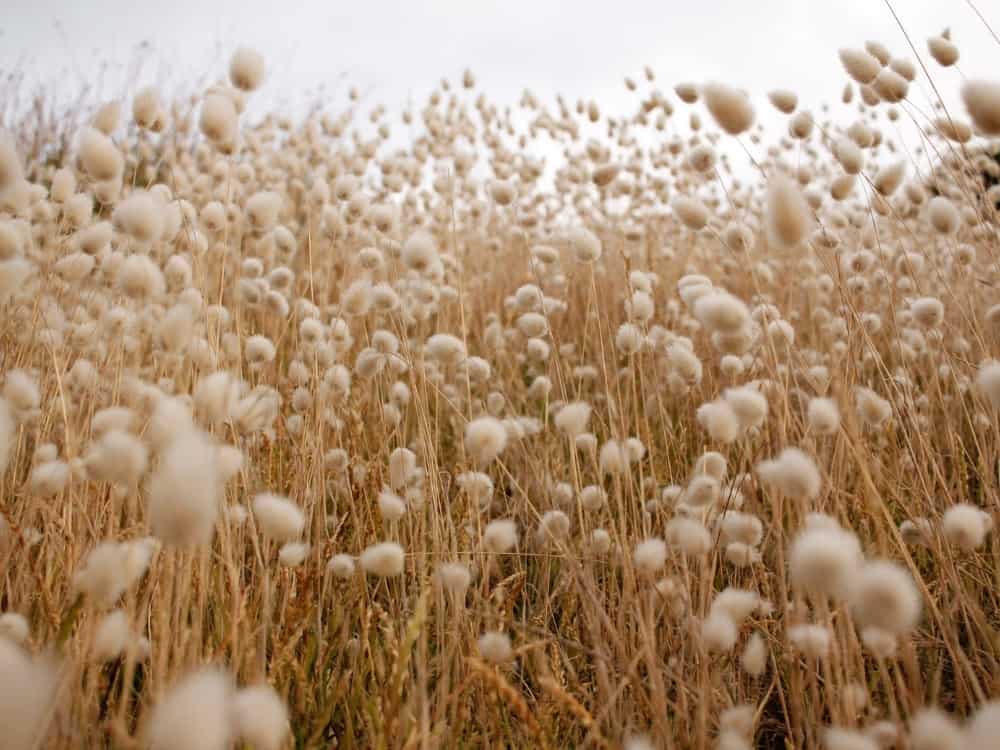
According to GOTS themselves, “[T]he GOTS label has both benefited from and contributed to a remarkable growth in the use of organic fibres (especially cotton).”
But the ‘growth’ in organic cotton hasn’t benefitted consumers who’re paying a premium for organic textiles that aren’t, in fact, organic.
And our planet likely isn’t reaping the benefits of this uptick in consumption of goods that are deemed ‘organic’ but in actuality are produced (to a greater or lesser extent) with pesticides and fertilizers.
The “remarkable growth” is far from remarkable for farmers who make the switch to organic production only to find that their lower quality, shorter fibers often earn them less money than conventional cotton.
If GOTS and even the sustainable clothing brands that bear their logo are the only ones benefiting from consumer demand for organic cotton, then is GOTS trustworthy?
Their 2021 Annual Report indicates record growth whilst growing fraudulence in organic cotton is similarly if not proportionately on the rise, too.
The non-profit, self-funded organization claims to be “independent of any economic interests, existing solely for the public good.”
In the very next sentence, however, they report that “GOTS’s funds result predominantly from small fees from participating companies.”
In 2021, their growth and the 3.6 million euros they earned allowed them to expand their organization and on-board new representatives.
But with all this exponential growth (and resulting funds), improved transparency, reliability, and positive impacts on people and planet are yet to be seen.
6. If Not GOTS Then Which Certification?
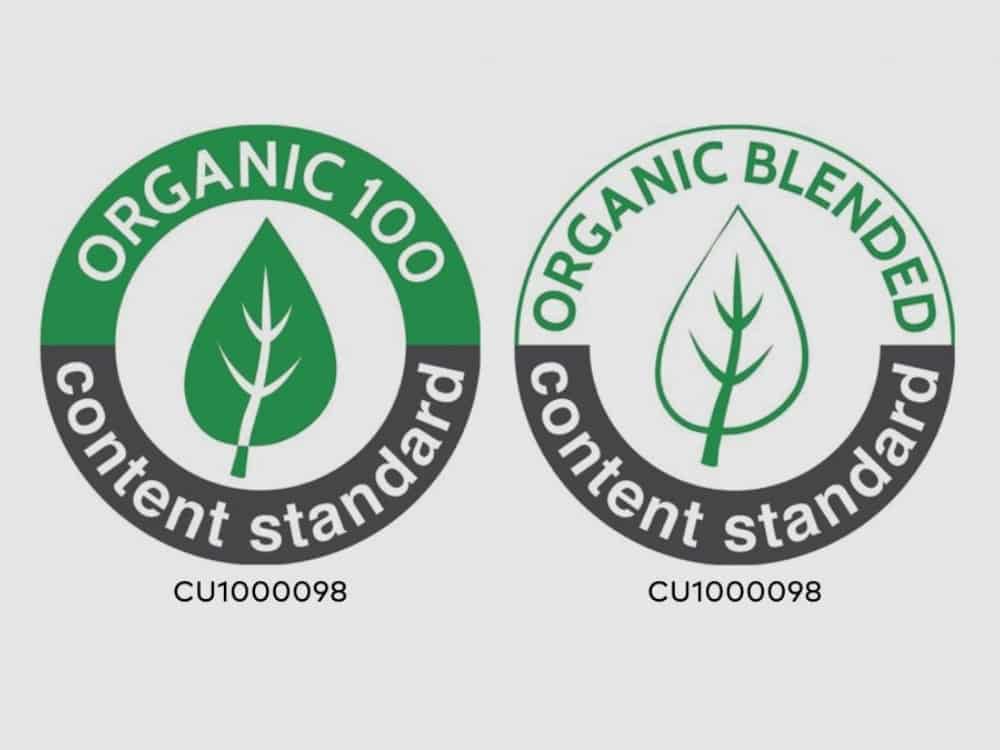
Alternative organic textile certifiers requiring a chain of custody across the supply chain are Textile Exchange’s Organic Content Standard and Soil Association Organic.
But, like GOTS, their certifying bodies don’t truly know if the cotton is grown organically from the jump.
OCS also lacks the widespread recognition and breadth of use that GOTS has.
If you consider GOTS certified cotton vs BCI cotton, GOTS is preferred because it’s supposedly for organic textiles (whereas the BCI certification can be used for conventional and GMO cotton).
Even when that may not be the case—for Indian organic cotton, anyway—GOTS is probably still the best we’ve got because there is at least more credible oversight for the rest of the supply chain.
BCI enforces no such measures on the use of sustainable dyes and other non-toxic manufacturing methods, whereas GOTS at least does that.
But is GOTS certified good?
Yes and no.
Starting in 2022, GOTS’ revision process will follow a new Standard Setting Procedure led by the Standard Revision Committee.
This includes experts from different stakeholder groups, like Cradle to Cradle, Fair Labor Association, Fairtrade International, Greenpeace International, Society of Environmental Toxicology and Chemistry, Transparency International, and Worldwide Responsible Accredited Production—and you!
If you’ve been dissatisfied with the way GOTS has grown, public comments are still being accepted, with GOTS version 7.0 being released in March 2023.
As an aim for the most recent revision, “GOTS seeks to achieve… long-term outcomes such as better and safer living conditions for consumers and workers, reduced impact on environment, economic growth of supply chain actors and increased confidence among customers for GOTS goods.”
Organic cotton still only encompasses 0.95% of global production. If we want to see that percentage grow, cleaning up GOTS’ act may be the best way forward.
Did you know we Have a Newsletter?
We cover the latest in sustainable living, fashion, zero waste, beauty, travel, finance and more…
Final Thoughts On GOTS Certified Textile Greenwashing
Is GOTS certified cotton sustainable?
From the ginning process onwards, yes.
But on the farm—which is arguably where sustainability matters most—it’s unclear and has a lot of people asking, “Is GOTS clothing greenwashing?”
If they’re made with GOTS certified textiles that aren’t actually organic, then there could be some greenwashing behind that green and white t-shirt logo.
But if truly organic textiles were to meet GOTS standards throughout the rest of the supply chain, it would produce an environmentally and ethically-sustainable product.
So let’s keep asking questions like, what is GOTS certified and what does it actually mean for people and our planet?
You can help do your part by sharing this article to encourage others to do the same.
Concerned consumers have driven the rise in popularity of the certification—along with other increasingly common ones like OEKO-TEX—and by holding these certifying bodies accountable to their own standards, we can ensure they keep improving.
Pin these:
